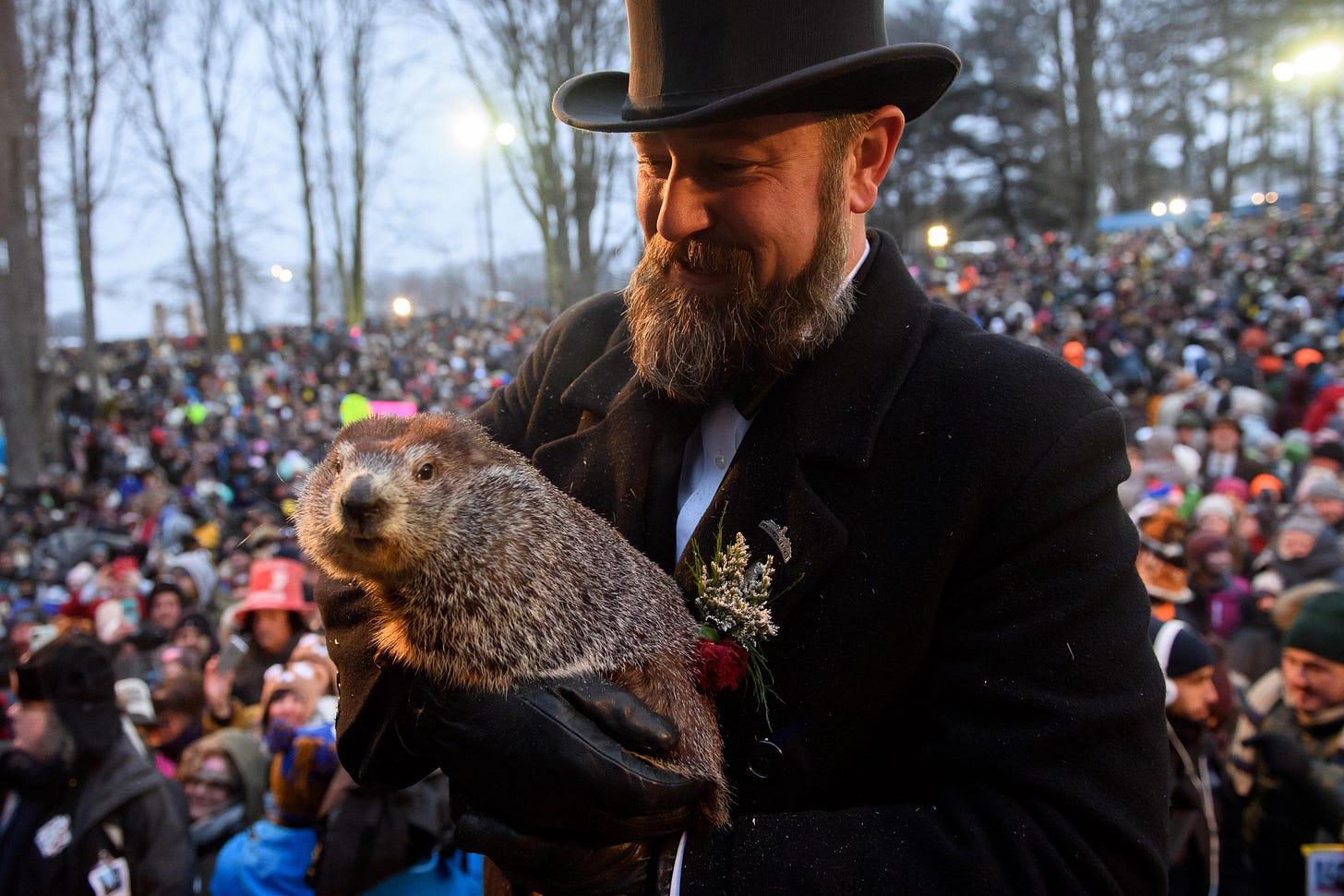
Remember the 1993 film Groundhog Day? Weatherman, Phil Connors (Bill Murray) is in Punxsutawney, Pennsylvania to cover the annual celebration of Groundhog Day but ends up being stuck living the same day over and over. It is an amusing film that brought the Groundhog Day tradition to the masses. Watch the trailer (2:40 mins) for Groundhog Day to refresh your memory, or get acquainted with the movie for the first time.
The belief at the root of this tradition is that if a groundhog leaves its burrow on February 2 (Candlemas, August 2 in the southern hemisphere) and sees its shadow, then there will be six more weeks of winter, but if there is no shadow, spring will come early. In other words, if the weather is fine and sunny on February 2, expect the winter to last longer and if the weather is cloudy, expect an early spring.
The Groundhog Day tradition originated with the Pennsylvanian Dutch who emigrated to America from German-speaking regions of Europe in the 17th to 19th Centuries. This short (2:18 min) video offers a quick explanation.
Right across Europe, it was a common custom to predict the weather at Candlemas through the emergence of hibernating animals. Initially, the bear was used but as bear numbers dwindled in many regions, other animals became popular, such as the fox but more commonly the badger. A German proverb about the emergence of the badger says:
Sonnt sich der Dachs in der Lichtmeßwoche, so geht er auf vier Wochen wieder zu Loche - "If the badger sunbathes during Candlemas-week, for four more weeks he will be back in his hole"
When European immigrants arrived in the Americas, they adapted their customs to the local environment and thus the tradition of the weather-predicting badger was adapted to a similar native animal such as the groundhog, although marmots are used instead in Alaska and Quebec.
Many states and provinces have groundhog mascots that are kept specifically for the purpose of the February weather prediction:
USA - Queen Charlotte and Sir Walter Wally in North Carolina, Staten Island Chuck in New York, French Creek Freddie in West Virginia, General Beauregard Lee in Georgia, and of course Punxsutawney Phil in Pennsylvania
Canada - Shubenacadie Sam in Nova Scotia, Wiarton Willie in Ontario, Balzac Billy in Alberta, and Fred la Marmotte in Quebec

Weather divination at this time of year was also common in the British Isles. It was connected to Candlemas traditions on February 2 or in pre-Christian folklore it was connected to Imbolc/Brigid’s Day on February 1. One old proverb says:
If Candlemas be fair and bright Winter will have another flight If Candlemas be cloud and rain Winter will be gone and not come again.
Badgers were often used for weather prediction, as were serpents. A Scottish Gaelic proverb says:
Thig an nathair as an toll
Là donn Brìde,
Ged robh trì troighean dhen t-sneachd
Air leac an làir.The serpent will come from the hole
On the brown Day of Bríde,
Though there should be three feet of snow
On the flat surface of the ground.

There is also an old folktale from Scotland, Ireland, Wales and the Isle of Man, that the Cailleach, the old hag of the land and winter goddess, gathers her firewood for the rest of winter at Imbolc. Legend has it that if she decided to make winter and the cold weather last longer, she’d ensure a clear and sunny Imbolc day, allowing her to gather ample firewood. It was considered good luck for foul weather at Imbolc as it meant that the Cailleach was resting, and winter's end would be near.
The weather for Imbolc in my region this year was sunny, if a little cool and blustery, which according to folklore, indicates a long and cold winter. However, the land is bursting with early signs of spring and the weather bureau predicts a shorter winter, leading into a brief spring and a long, dry summer. Let’s see what the weather brings in the next couple of months. I’ll keep you posted.
Next week, we’ll explore the importance of the birch tree and its association with spring. Until then I give you a Scottish Blessing… lang may your lum reek (Long may your chimney smoke).





